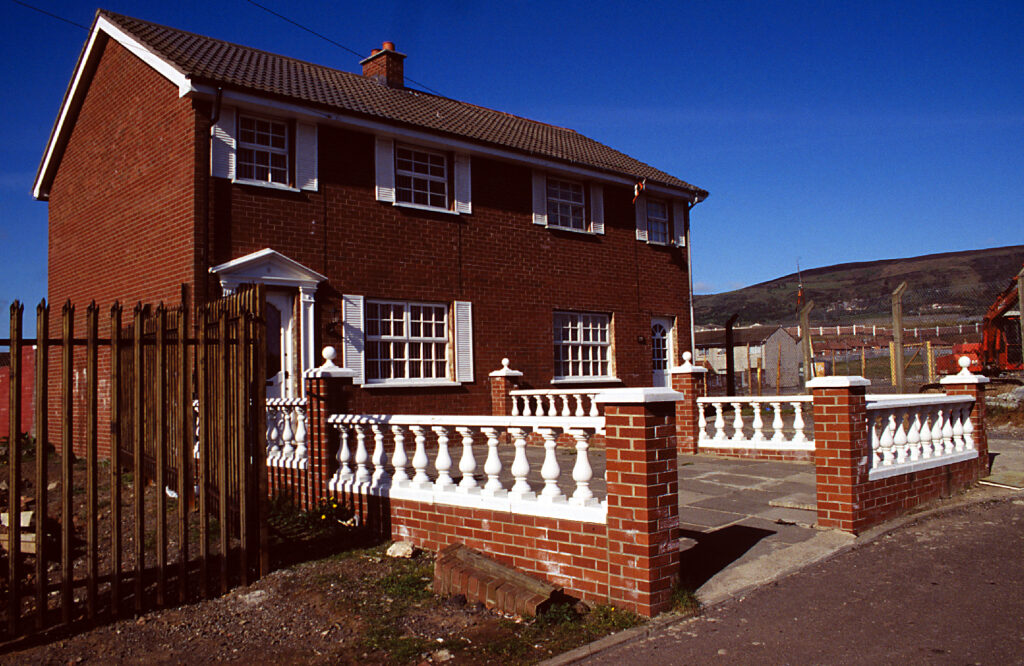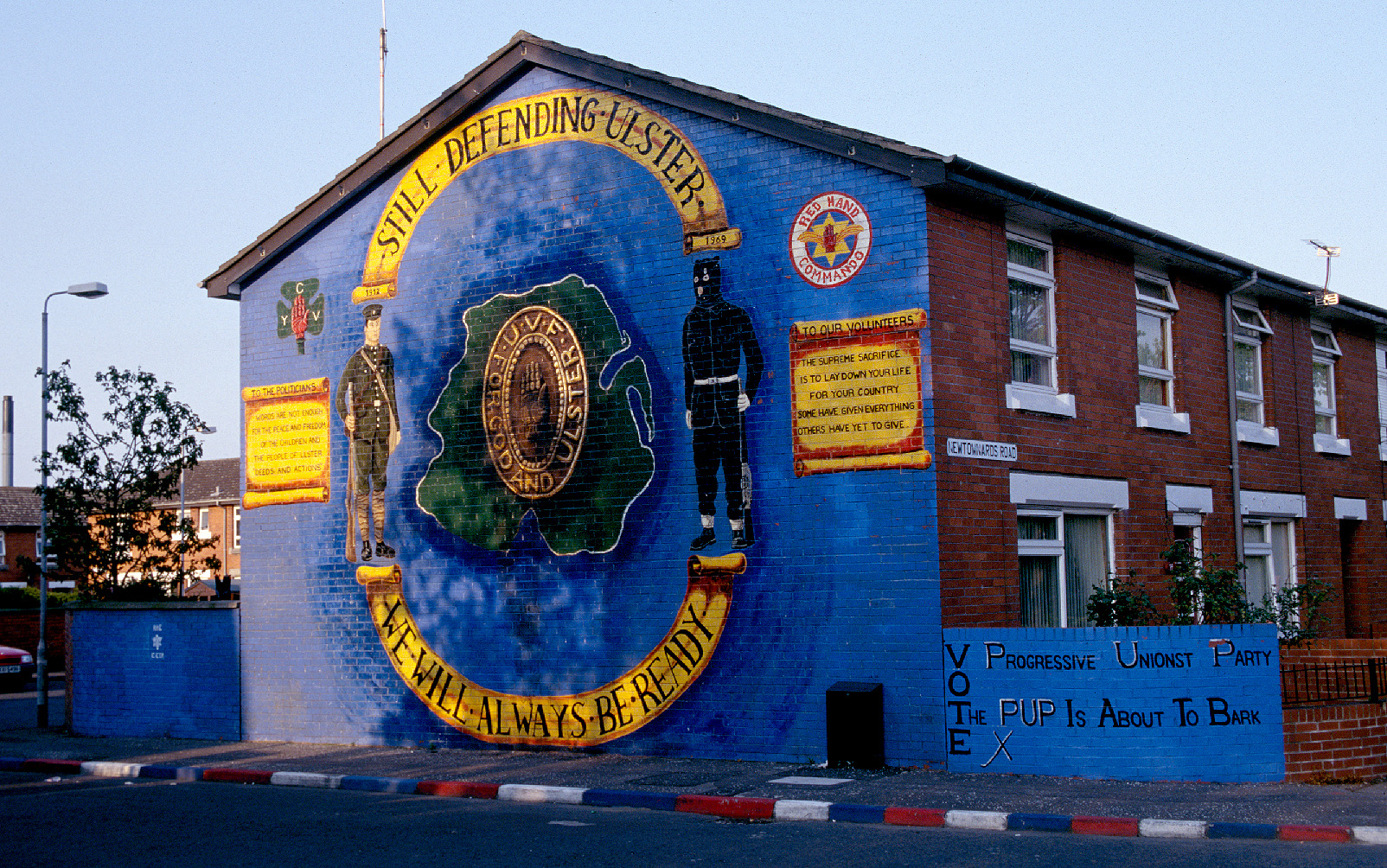

left image: Graffitti marks sectarian boundaries, segregating neighborhoods. ©Robert Baker/Habitat For Humanity Northern Ireland
right image: Vernon Toogood, a Protestant, and Gerry Crossin, a Roman Catholic, share the responsibility of overseeing the construction of Habitat houses in Belfast, 1999. © Kim MacDonald/Habitat For Humanity Northern Ireland
| Location | Iris Close and Glencairn, West Belfast; Ballysillan and Ligoniel, North Belfast |
| Date | 2002–present |
| Organization | Habitat for Humanity Northern Ireland |
| Occupants | Low-income families |
| Design Firm | David Ferguson & Associates |
| Project Architect | Fionnuala Bradley |
| Structural Engineer | Century Homes |
| Civil Engineer | Whitemountain Civils |
| Additional Consultant | Leslie Kane (civil engineer) |
| Construction | 1,000+ volunteers |
| Funding | Corporate, religious, and individual donations |
| Cost per unit | $100,000 |
| Area | 742 sq. ft./69 sq. m (two bedrooms); 1,011 sq. ft./94 sq. m (three bedrooms); 1,166 sq. ft. /108 sq. m (four bedrooms) |
Habitat for Humanity’s mandate is to build “simple, decent housing.”
However, every once in a while one of the 2,100 affiliates that make up the faith-based organization will take its mandate a step further. These houses built by Habitat for Humanity Northern Ireland are one example.
In the early 1990s the affiliate’s executive director, Peter Farquharson, took a leave of absence from his job as a structural engineer in London to volunteer along with his wife and children with Habitat for Humanity at its headquarters in Georgia. His three-month stint in the Deep South turned out to be a life-changing experience. Seeing racially integrated housing developments in an area of the United States once torn by segregation inspired him to bring a similar kind of reconciliation to his native Northern Ireland, where 30 years of conflict had destroyed homes and communities, leaving blighted graffiti-strewn neighborhoods in its wake. So when the organization offered him the chance to start an affiliate in Belfast, he agreed.
He returned to Northern Ireland in 1993 with $20,000 in startup funds from Habitat for Humanity International. “I started knocking on doors and telling people that I wanted to do an integrated housing project across the peace lines, and people just thought that I was mad,” said Farquharson of the difficulty he faced fundraising and generating community support in the tense climate of Northern Ireland at the time.
The group’s first project, based on the Habitat “sweat-equity” model, was to build 11 homes in Iris Close, a blighted and desolate Catholic neighborhood in West Belfast. The development—just 400 yards (400 m) from Bombay Street, one of the flashpoints when the Troubles first flared up in the 1960s—brought Protestants and Catholics together to complete the first new construction in the area in years. For its second project the group undertook a 16-home development in Glencairn, a Protestant neighborhood in West Belfast that had been witness to some of the most horrific atrocities of the conflict.

A Habitat house in Iris Close, West Belfast, 1996. ©Robert Baker/Habitat For Humanity Northern Ireland
“We’ve deliberately chosen areas that are difficult to work in as they are the ones that are in most need,” Farquharson once explained to the Guardian, a British newspaper. “These were no-go areas for large sections of the community for years. It’s hard for outsiders to appreciate the courage it takes for a Catholic to go into Glencairn. This was the estate where the Shankhill butchers used to dump the bodies of Catholics. It’s probably the most staunch loyalist estate in Belfast, but we have Catholics working here on homes for their neighbors.”
With the ceasefire agreement in 1998, gaining support became easier. The group since has taken on tandem projects in Ballysillan and Ligoniel, neighboring communities in North Belfast fractured along sectarian lines. Doing the projects simultaneously allowed volunteers to cross the divide and participate in both. The affiliate is now partnering with local officials to build the first truly integrated housing estate in Belfast, where Farquharson hopes Protestants and Catholics will not only build together but also eventually live together.

The 30-year conflict has taken its toll on the area’s housing stock. (1999) © Kim MacDonald/Habitat For Humanity Northern Ireland
















READ OR LEAVE A COMMENT